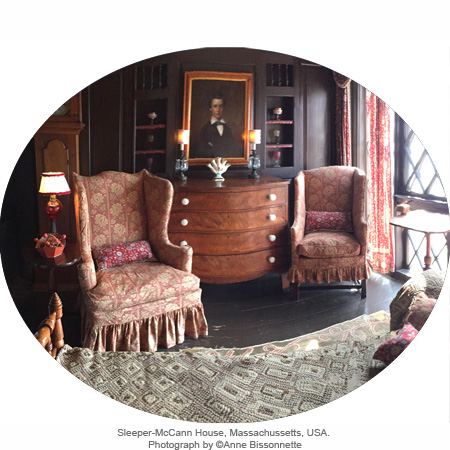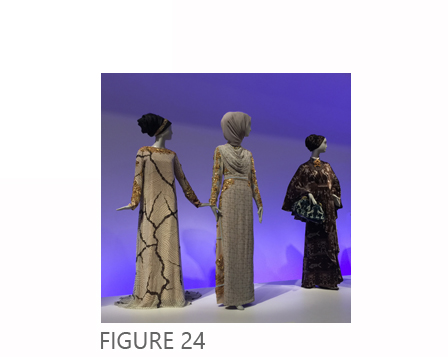The Three P’s of Comfort
Comfort can be defined as a neutral state where one experiences no discomfort or pain.1 Dress comfort, however, is multidimensional. It has three facets: physical (the feel of fabric on the skin), psychological (the sense of well-being in certain clothing), and physiological (how the body functions). Dressing gowns uniquely address all the components of comfort, which may have secured their longevity in fashion (Figures 18 & 19). These three facets play an important part in the history of innerwear and the garments people choose to wear in the comfort of their homes.
Involvement in sports spread across genders in the mid to late 1800s and with it, the demand for certain types of comfortable clothing (Figures 20 & 21). During the 20th-century, “sportswear,” (i.e. garments meant for both active and spectator roles) placed comfort at the center of fashion design. By the early 1970s, sportswear was a term used for apparel meant for a casual lifestyle.2 For example, a man’s leisure suit (Figure 22) aimed to be a comfortable alternative to the three-piece suit. In recent decades, “athleisure” (e.g. sneakers, hoodies, leggings) has bridged the gap between sports and everyday wear and ―to the horror of some―is now worn almost everywhere (Figure 23). This flexibility of use makes comfortable, athletic garments, like sweatpants, liminal types of innerwear.
Context is paramount to understanding innerwear. The wearing of a hijab, a head covering worn by some Muslim women, is dependent on who is within the home, whether measures of modesty are to be considered, and what the wearer is comfortable with (Figure 24).3 For some, it creates a degree of psychological comfort that allows the wearer to feel connected to their religion, community, and identity in an outward expression.
1 Edwin Kamalha, Yongchun Zeng, Josphat I. Mwasiagi, and Salome Kyatuheire, “The Comfort Dimension; a Review of Perception in Clothing,” Journal of Sensory Studies 28, no. 6 (2013): 424. https://doi.org/10.1111/joss.12070.
2 Farid Chenoune, A History of Men’s Fashion, trans. Deke Dusinberre (Paris: Flammarion, 1993): 292.
3 Azeezat Johnson, “Getting Comfortable to Feel at Home: Clothing Practices of Black Muslim Women in Britain,” Gender, Place & Culture 24, no. 2 (2017): 281. https://doi.org/10.1080/0966369X.2017.1298571.
Curators
Anne Bissonnette, PhD, Bronwyn Bates, Rhonda Buie, Emma Carr, Juli Grombacher, Frances Heaton, Danielle Klatchuk, Evelyn Leung, Diana Leyva Luciano, Ariane Mendoza, Thomas Osterling, Nicole Morozewich, Emma Ross, and Chloe Schell.







